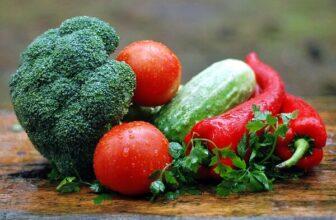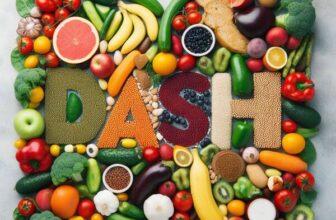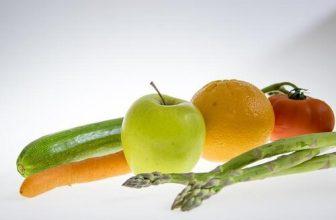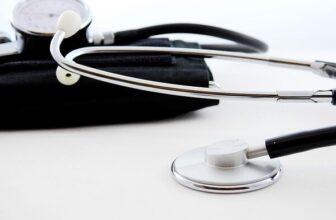Does Sugar Make Your Blood Pressure Go Up?
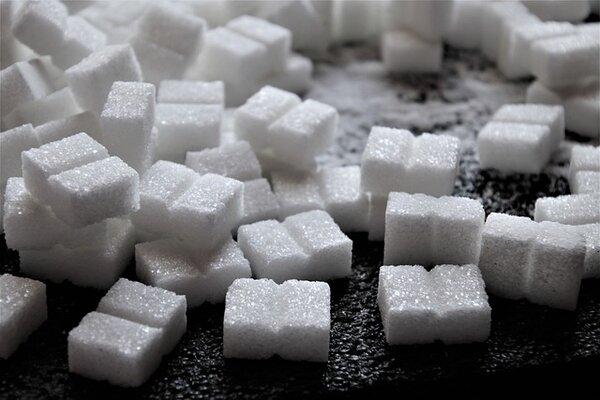
(Note: Some of the links in this post are affiliate links, and we will be compensated when you make a purchase by clicking through our links at no additional cost to you.)
In the United States, nearly 1 out of 2 adults has high blood pressure (hypertension). And around 1 in 3 adults has high blood pressure worldwide. If you belong to this group, your physician probably first advised you to reduce your salt intake. However, a lot of researchers now argue that we may have been focusing on the incorrect white crystals, namely salt instead of sugar.
While cutting back on salt may have a small positive impact on some people with high blood pressure, this effect does not extend to the general population, and newer evidence indicates that sugar in the diet may have a stronger link to high blood pressure than salt.
>>> Discover The Top DASH Diet Cookbooks To Help Lower Your Blood Pressure
What’s The Difference Between Carbohydrates And Sugar?
Carbohydrates are part of a healthful diet. Carbohydrates are an essential macronutrient the body needs to function properly and the primary energy source for your body (along with proteins and fats), but not all carbohydrates are the same. Carbohydrates come in three different forms in food: sugar, starches, and fiber. Depending on the chemical makeup of the food and how rapidly the sugar is digested and absorbed, carbohydrates are either referred to as simple or complex. It matters what kind of carbohydrates you consume; foods high in simple sugars, particularly fructose, raise triglyceride levels. Triglycerides, often known as blood fats, are a crucial indicator of metabolic health; elevated levels have been linked to fatty liver, diabetes, and coronary heart disease.
- Simple Carbohydrates: are digested quickly and release bursts of glucose (energy) into the bloodstream. Because of this, eating dessert may cause you to feel a surge of energy that is quickly followed by a crash of exhaustion when that energy is used up. Simple sugars are found in refined sugars, such as the white sugar in a sugar bowl. Added sugars, including refined sugars, are high in calories but low in fiber, vitamins, and minerals, which might result in weight gain.
- Not All Simple Sugars Are The Same: Simple sugars can also be found in more nutritious foods, like milk (lactose) and fruit (fructose). These sugars are “naturally occurring” and, in contrast to refined sugars or “added sugars”, frequently contain vitamins, minerals, and fiber that our bodies require. Although the body’s response to sugars does not depend on whether they are naturally present in a food or added to the food, added sugars supply calories but few or no nutrients.
- Complex Carbohydrates: provide a lower, more consistent release of glucose into the blood stream because they are digested more gradually. Some foods high in complex carbohydrates are healthier options than others, just like with simple sugars.
Why Is Sugar Bad For You?
Added sugars, also known as caloric sweeteners, are sugars and syrups that are added to foods at the table or during processing or preparation (such as high fructose corn syrup in sweetened beverages and baked products). Health risks come from added, refined sugars found in easily accessible processed foods, not from fruits, vegetables, and grains. Sugary drinks (normal soft drinks, sweetened tea and coffee, energy drinks, and fruit drinks), candy, desserts, and sweet snacks (cakes, cookies, pies) are the main sources of added sugars. Breakfast cereals, bars, and other goods all contribute smaller quantities, as do dairy desserts and milk products (ice cream, sweetened yogurt, and sweetened milk).
Without realizing it, many people eat far too much sugar in our diets. Because our bodies don’t require sugar to function properly, it’s critical to be aware of how much you ingest. Added sugar provide no nutrition but a lot of excess calories that might cause weight gain or even obesity. That might compromise heart health. Additionally, recent studies indicate that eating too much sugar may actually make you more sensitive to the negative effects of salt on blood pressure.

Here are 4 ways excess sugar can cause high blood pressure:
- Hyperinsulinemia: This occurs when the amount of insulin in your blood is higher than normal. Insulin is a hormone that transports glucose from the food you eat into your cells, where it is used for energy. It is believed that a higher-sugar diet raises blood pressure because it encourages the body to create too much leptin and insulin. Hyperinsulinemia also elevates blood pressure, in part, by lowering sodium and water excretion in the kidneys, and directly vasoconstricting blood vessels.
- Insulin resistance: When we consistently eat too much added sugar, our fat cells eventually run out of room to store this extra energy. The effectiveness of insulin gradually decreases when there is too much free sugar entering the bloodstream directly (because it digests quickly) and the body responds to this decline of insulin effectiveness by making more insulin. Insulin resistance develops when insulin levels is too high. Magnesium can no longer be stored in the body and will exit the body through urination if insulin receptors are blunted and the cells become insulin-resistant. Blood vessels will not be able to fully relax if magnesium levels are too low, which causes them to tighten, increasing blood pressure.
- Nitric oxide: In particular, fructose sugar raises uric acid levels, which raise blood pressure by preventing the production of nitric oxide (NO) in blood vessels. Nitric oxide is recognized as the most essential vasodilator and helps blood vessels keep their flexibility.
- Advanced glycation: Advanced glycation end products (AGEs) are potentially harmful compounds that formed when protein or fat combine with sugar. They exist in the body and in foods. They are thought to contribute to atherosclerosis by initiating processes that lead to blood vessel narrowing and stiffness, which contribute to vascular problems and increase blood pressure.
How Much Sugar Is Too Much?
The American Heart Association advises keeping daily added sugar intake to no more than 6% of total calories. That amounts to:
- For Women: no more than 100 calories, or roughly 6 teaspoons of sugar per day.
- For Men: No more than 150 calories, or around 9 teaspoons of sugar per day.
The AHA guidelines concentrate on all added sugars rather than highlighting any particular ones, such as high-fructose corn syrup.
How To Cut Down On Sugar?
Although reducing your sugar intake can seem difficult, you can make a variety of small adjustments that will have a large impact.
- If you frequently consume sugar-sweetened beverages (regular soft drinks, sweetened tea and coffee, energy drinks, and fruit drinks), switch to water or sugar-free alternatives. Consider adding fruit or herbs to your water to add flavor, such as cucumber and mint or lemon and pineapple.
- Instead of jam or honey, spread some mashed banana on your toast.
- Avoid adding extra sugar to your breakfast cereals/oatmeal or buy them with added sugar. Add some banana slices, fresh or frozen berries to your breakfast cereals instead to naturally sweeten it.
- Use less sugar while cooking and use spices like cinnamon, ginger or allspice instead to add flavor.
- Check the labels of seemingly nutritious treats like cereal bars; anything with the letter “ose” or that is marked as syrup or molasses contains added sugar.
- Throw away the white and brown table sugar, syrup, honey, and molasses. Reduce the quantity of sugar that is added to foods and beverages that you consume frequently, such as cereal, pancakes, coffee, and tea. To start, try halving the typical amount of sugar you add. Then, gradually reduce it.
- Reduce the amount of sugar specified in the recipe by one-third to one-half when making cookies, brownies, or cakes. A lot of times you won’t notice the difference.
- Choose foods with the fewest added sugars by comparing their labels. Products made from dairy and fruit will have some natural sugars. The ingredients list will allow you to identify added sugars.
Often you can easily cut down your intake added sugars by switching to a healthier high-fiber diet.

Names for added sugars on labels include:
- Brown sugar
- Corn sweetener
- Corn syrup
- Fruit juice concentrates
- High-fructose corn syrup
- Honey
- Invert sugar
- Malt sugar
- Molasses
- Raw sugar
- Sugar
- Sugar molecules ending in “ose” (dextrose, fructose, glucose, lactose, maltose, sucrose)
- Syrup
Common sugar terms and their meanings on food products:
- Sugar-Free – less than 0.5 g of sugar per serving; contains no ingredient that is a sugar
- Reduced Sugar or Less Sugar – at least 25 percent less sugars per serving compared to a standard serving size of the traditional variety
- No Added Sugars or Without Added Sugars – no sugars or sugar-containing ingredient is added during processing
- Low Sugar – not defined or allowed as a claim on food labels
The only true way of ascertaining whether you have high blood pressure or not is by having it checked or monitored regularly using a home blood pressure monitor and tracking it with a blood pressure log. This is a painless procedure, and every adult should have their blood pressure checked regularly since your blood pressure can change over time. This way you are more likely to catch a change before it becomes dangerous. Ask your health care provider how often you need to check it.
>>> Discover The Most Accurate Blood Pressure Monitor For Home Use




